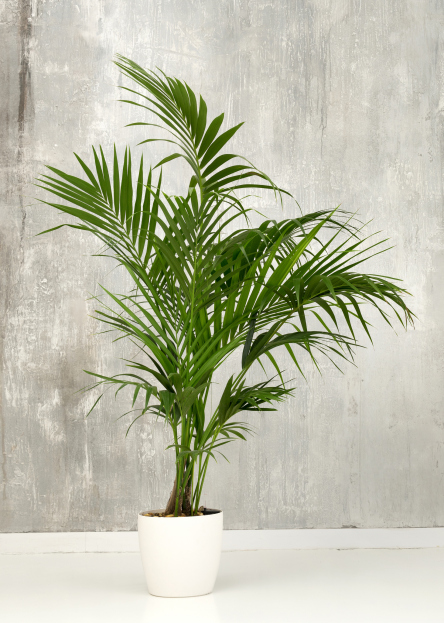
The Howea forsteriana, more commonly known as the Kentia Palm, is a timeless classic in the world of houseplants. With its graceful, arching fronds and elegant stature, this palm brings a lush, tropical feel to any indoor space—while being surprisingly low-maintenance. Native to Lord Howe Island off the coast of Australia, it’s loved for its appearance, slow growth, and air-purifying qualities.
Here’s how to help your Kentia Palm thrive in your home or office.
Kentia Palms prefer bright, indirect light, but they are also incredibly tolerant of lower light conditions—making them perfect for apartments, offices, or rooms with filtered sunlight. They’re one of the few palms that can adapt well to shady corners, though their growth may slow in these environments.
Avoid direct sun, especially during the hottest part of the day, as this can scorch the leaves and cause unsightly brown tips.
Water your Kentia Palm when the top 1 to 2 inches of soil feels dry. These palms like their soil to remain slightly moist, but never soggy. Overwatering is a common mistake and can lead to root rot.
During spring and summer (the active growing period), watering every 7–10 days is usually sufficient. In fall and winter, reduce watering frequency to about every 2–3 weeks depending on your home’s humidity and temperature.
Always ensure your pot has drainage holes, and never let the plant sit in standing water.
The Kentia Palm is quite forgiving when it comes to humidity, but it prefers moderate to high humidity. If your home is particularly dry, especially in the winter months, occasional misting or a nearby humidifier will help prevent browning leaf tips.
Kentia Palms thrive in average indoor temperatures between 60–80°F (16–27°C) and should be kept away from cold drafts, air conditioning vents, or heaters. Avoid temperatures below 50°F (10°C), as prolonged cold can stress the plant.
Use a well-draining potting mix—a blend formulated for palms or indoor tropical plants is ideal. You can also make your own by mixing standard potting soil with sand and perlite or orchid bark to improve aeration and drainage.
Repotting is only needed every 3–4 years (or even less often), as Kentia Palms like to be slightly root-bound. Choose a container that’s only slightly larger than the current one when you do repot.
Feed your Kentia Palm monthly during spring and summer with a diluted liquid fertilizer balanced for green foliage plants (e.g., 10-10-10 or 20-20-20). Avoid over-fertilizing, which can lead to salt buildup in the soil and damage the roots.
Skip fertilizing in the winter when growth naturally slows.
Kentia Palms require very little pruning. Simply remove any yellow or brown fronds at the base using clean, sharp scissors. Avoid cutting green fronds, as this can damage the plant and reduce its ability to photosynthesize.
Wipe the leaves occasionally with a damp cloth to remove dust and keep them looking glossy and healthy.
Good news—Kentia Palms are non-toxic to cats, dogs, and humans, making them a safe choice for households with pets or small children.
With proper care, Kentia Palms are long-lived and can grow up to 10 feet indoors, adding graceful vertical greenery to your space.